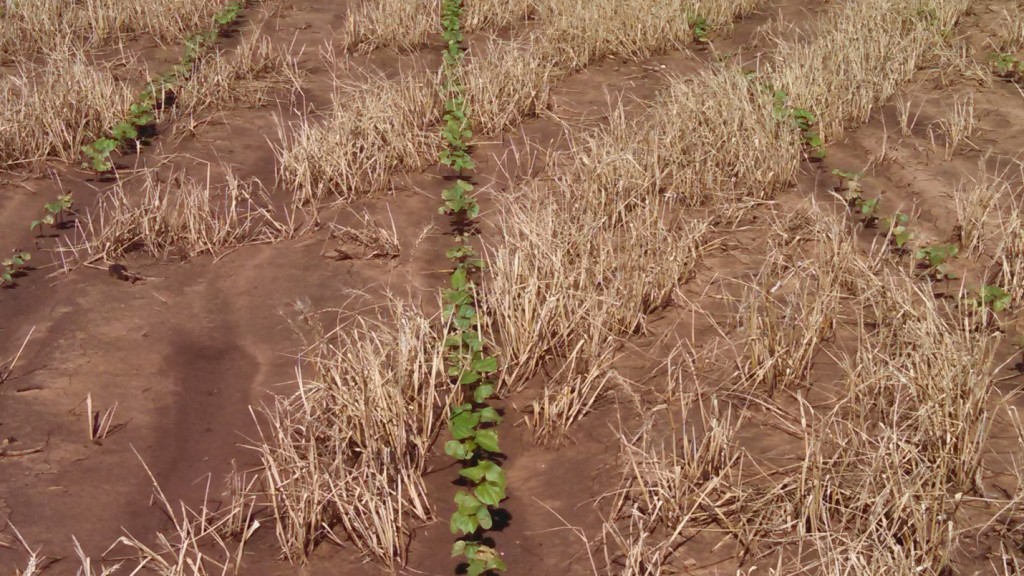by Suhas Vyavhare and Blayne Reed; Texas A&M AgriLife Extension
With the growing season just around the corner, farmers are busy preparing fields and making tough decisions for 2016. Cotton, the crop often known as “white gold,” looks to have some difficulty bringing major economic incentives to the farmers this year. Commodity prices have been below production costs for the last couple of years and future market moves, or lack thereof, are suggesting prices will be about the same this year. This means 2016 is going to be another challenging economic year for cotton growers. Despite this, surveys indicate increased cotton acreage in Texas in 2016. The increase in projected cotton acreage is largely the result of similar and weaker market prices of most of the usual alternative crops to cotton (corn, sorghum, wheat). The looming threat of sugarcane aphid is also likely to prompt some sorghum producers to opt out of sorghum production. There are some improved expectations for weather and water conditions that will be more favorable for cotton production as we come into planting season but often in uncertain times we just return to what we are best at.
With the current market conditions, one common way to balance a crop production budget is to trim production cost. This is where we think producers are going to be faced with some hard decisions. From the insect pest management viewpoint, a big chunk of money is spent in the form of tech fees well before the crop comes out of the soil. Decisions about whether or not to plant varieties with Bt traits and whether or not to have preventive seed treatment are tough to make.
Bt cotton is genetically altered to naturally control the bollworm and other caterpillar pests as the insect feeds on the plant. The presence of Bt does not enhance yield but it can be a hedge of protection from potential yield robbing insect damage. While, in case of seed treatments, the seeds are treated with pesticides prior to planting as a preventive measure against early-season pests such as wireworms and thrips.
Deciding whether or not to use Bt seeds and/or seed treatments is a bit like gambling. Some years the gamble works, then in the next it may not. In the past few years we did not get high caterpillar pressure in cotton on the Texas High Plains so many may feel that non-Bt cotton may do just fine. Many of those Lepidopteran pests in recent years have been lured away from cotton toward late planted corn or sorghum and those are crops that might not have very many acres in the region this year. It could also turn out to be a higher than average year for caterpillar pressure. In either case a Bt trait could be just the hedge of protection that protects a field’s economic margin.
Preventive seed treatments play an immensely important role in protecting seedling cotton from early season insect pests such as thrips and wireworms insuring a healthy start. Without a quick and healthy start, High Plains cotton does not tend to do very well. If you are opting not to have an insecticidal seed treatment with decent residual properties, you will need to take extra care in early season field scouting and be ready at a moment’s notice to treat for any potential problems to save the crop and income. Remember, with early season thrips control we need to be scouting for the pest and not reacting to the damage. If too much thrips damage has occurred, chemical treatment might pay some returns but a huge loss in plant developmental time and likely yield has already occurred and the treatment could actually hold more of a revenge factor than practical. Many producers will schedule thrips treatments around over-the-top residual herbicide applications and feel they might be achieving optimum control. However, the timing of these applications do not always match and producers often need to make multiple thrips treatments in heavy population situations and not just one all covering trip across the field. Also, with the foliar insecticide applications, we are likely delaying the early establishment of beneficials into our fields and possibly opening a door for other secondary pests to establish in our fields before the predators can lend their much needed hand. Meanwhile, insecticidal seed treatments go a long way in mitigating that early and rapidly occurring damage.
When we discuss and think through the pros and cons, using (and yes purchasing) these preventive tactics for insect pest management might just be the wiser decision. The upfront investment in preventive tools helps give us the helping hand and peace of mind that we need that might have just helped divert from a very costly disaster. If those potential pest disasters do arise, it is very likely that those who put these measures in place should get paid significant dividend. When farmers opt for herbicide tolerant traits, addition of Bt trait should not add that much additional cost. The additional tech fee for Bt and proven insecticidal seed treatments will likely be less than multiple early foliar applications may cost in the event of a heavy caterpillar infestation later in the season.
Insect pressure will vary with general location, between fields, and will be dependent upon weather and cropping practices. Ultimately, it is important that farmers make decisions based on local agronomic and environmental conditions and should be based on solid field scouting and experience.
Suhas Vyavhare
Assistant Professor-Cotton Extension Entomologist-Lubbock
Suhas.Vyavhare@tamu.edu
(806) 746-6101

